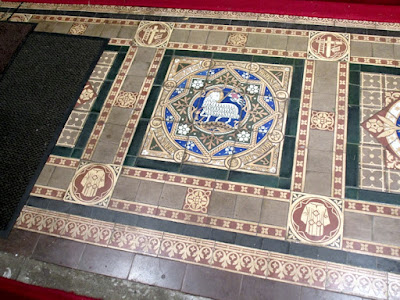
But the Cardinal’s overall attitude to covid is, as I say,
clear and predictable. It’s summarised in a homily he preached on the feast of
Our Lady of Guadalupe in Wisconsin last December. This is his argument. The US has
treacherously been made economically dependent on Marxist materialism in the
form of China; the pandemic is being used to destroy Christian faith and
practice; the Church is full of moral and theological laxity and incapable of mounting
a defence. All Christians can do is flee to Our Lady who weeps along with them.
I am very sure Our Lady weeps on occasion, and in this
baleful picture there are, not surprisingly, some colours that while lurid are not
too far off reality. The influence of China is indeed troublesome; the Church certainly
hasn’t covered itself with glory during the pandemic, though if the Cardinal thinks
the Roman dispensation has been wanting in this respect he should peer this
side of the Tiber. But it’s the middle bit of his case which catches the ear:
Then, there is the mysterious Wuhan virus about whose nature
and prevention the mass media daily give us conflicting information. What is
clear, however, is that it has been used by certain forces, inimical to
families and to the freedom of states, to advance their evil agenda. These
forces tell us that we are now the subjects of the so-called “Great Reset”, the
“New Normal”, which is dictated to us by their manipulation of citizens and
nations through ignorance and fear. Now, we are supposed to find in a disease
and its prevention the way to understand and direct our lives, rather than in
God and in His plan for our salvation. The response of many Bishops and priests,
and of many faithful has manifested a woeful lack of sound catechesis. So many
in the Church seem to have no understanding of how Christ continues His saving
work in times of plague and of other disasters…. At a time when we most need to
be close to one another in Christian love, worldly forces would isolate us and
have us believe that we are alone and dependent upon secular forces which would
make us slaves to their godless and murderous agenda.
Is the virus mysterious? Is information about its nature and
prevention conflicting? I mean, my feeling is that, while we may not and will
probably never know where it came from, we understand pretty much everything we
need to about it. Nobody knows where the Spanish Flu of 1919 originated, or pretty
much any other pandemic infection. Like most covid-sceptics talking outside
their own echo-chambers the Cardinal never ties any of his argument down to definitive
statement: he insinuates, hints and suggests – ‘certain forces’ are to blame,
the shadowy elites who are, apparently, not only content with enriching themselves
(which is the left-wing reading of the ‘Great Reset’), but also destroying the
Christian faith and replacing God as well. I can’t think of anything emanating
from the World Health Organisation, the World Economic Forum, the UN, or any other
organisation of global influence which could justify such an idea, but what do
I know.
Great Reset language, and the reaction to it, interests me. A
global crisis which halts so much of human society seems to me almost
inevitably to bring into question many of the normal aspects of social organisation:
it’s natural that individuals and organisations should have their usual habits
shaken up and query whether they actually want to resume them. You see that everywhere,
including churches. It strikes me as a natural, obvious, and entirely healthy
thing. The use of this language by rich and influential individuals operating
on the global stage is surely just a reflection of the same psychological instinct;
what they mean by it and how far they are prepared to do anything about it is another
matter. From Prince Charles to Karl Schwab they seem to me to be vaguely
progressive and well-meaning souls who have no real conception that anything
about their own lives or positions might have to be sacrificed to bring about
the changes that they say they want, and that is also standard, for the rich and
for all of us, most of the time. That's why the change they promote might well enrich and empower such people still more, even if they don't actively plan it that way.
Cardinal Burke also shares this with the secular
covid-sceptics I have come across: that while he blames the elites for controlling the ignorant
masses through fear, it is his own discourse which is fear-filled. Its lack of
specifics and detail is exactly what energises fear: its story of undefined, dark,
evil forces who control our lives, manipulating and terrorising us, out to
destroy everything we value and that makes our lives worthwhile. In complete
contrast, the mainstream narrative of the pandemic has concentrated on casting
light and hope. Here is a new virus; this is serious in this way, and in this
way; but look, this is what we can do about it; and thanks to scientific effort,
there’s the prospect of putting it behind us, isn’t that good? I have no doubt
the Devil makes use of any situation. It is hard to see, however, the use he
can make out of lots of people not dying of a disease, and any sort of Christianity that concludes widespread horrible death is a salutary thing needs to look at itself hard.




















































